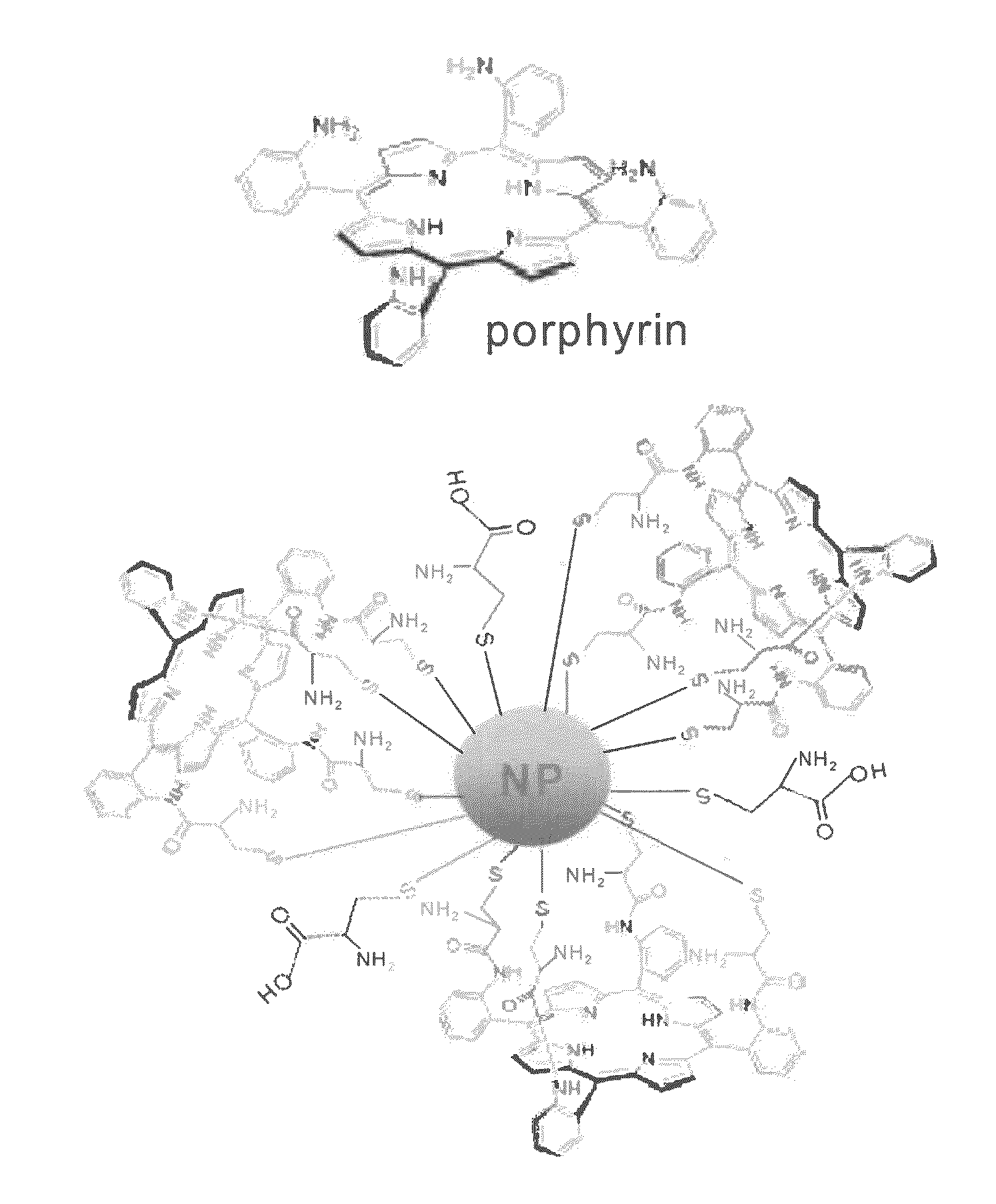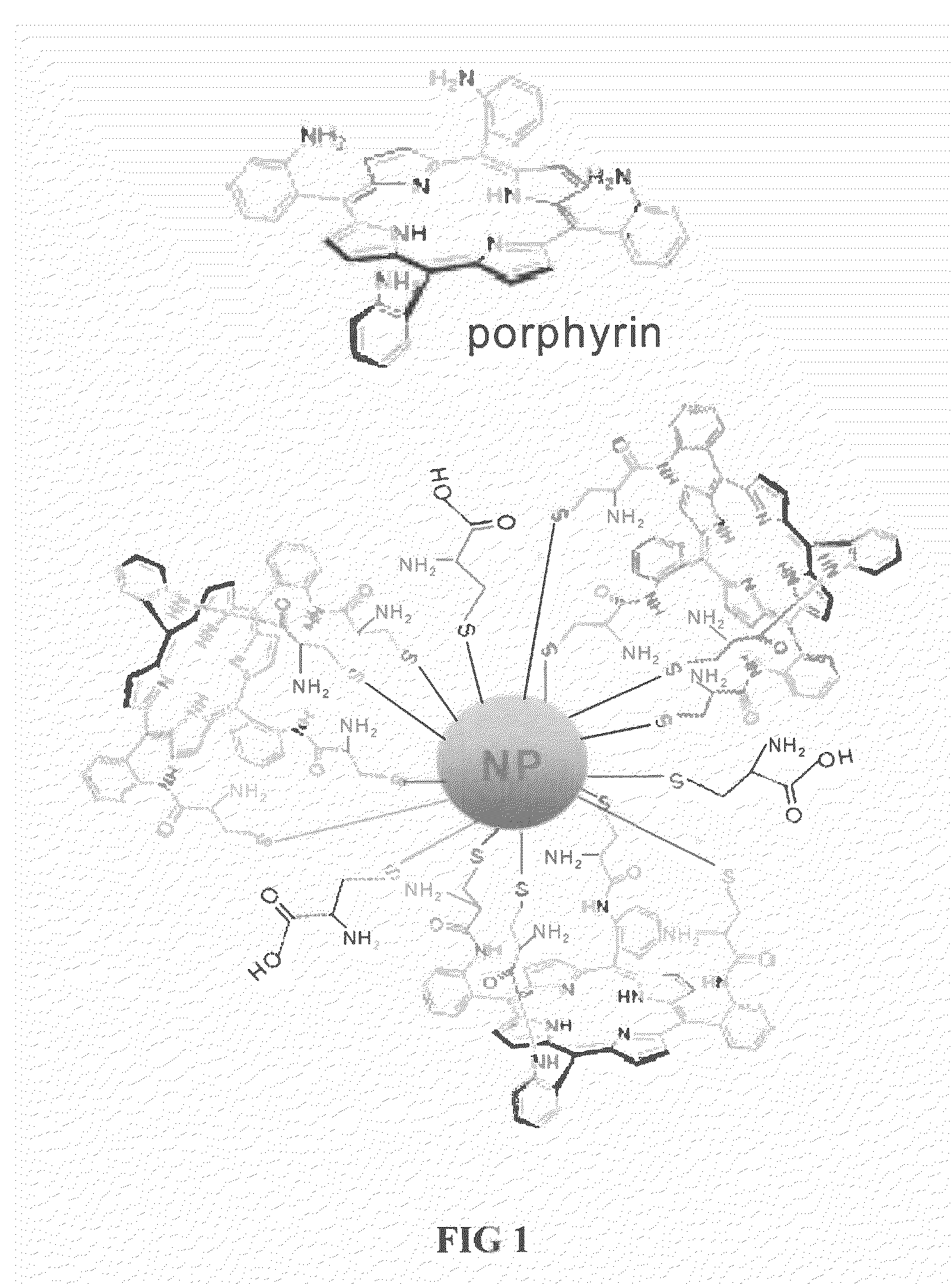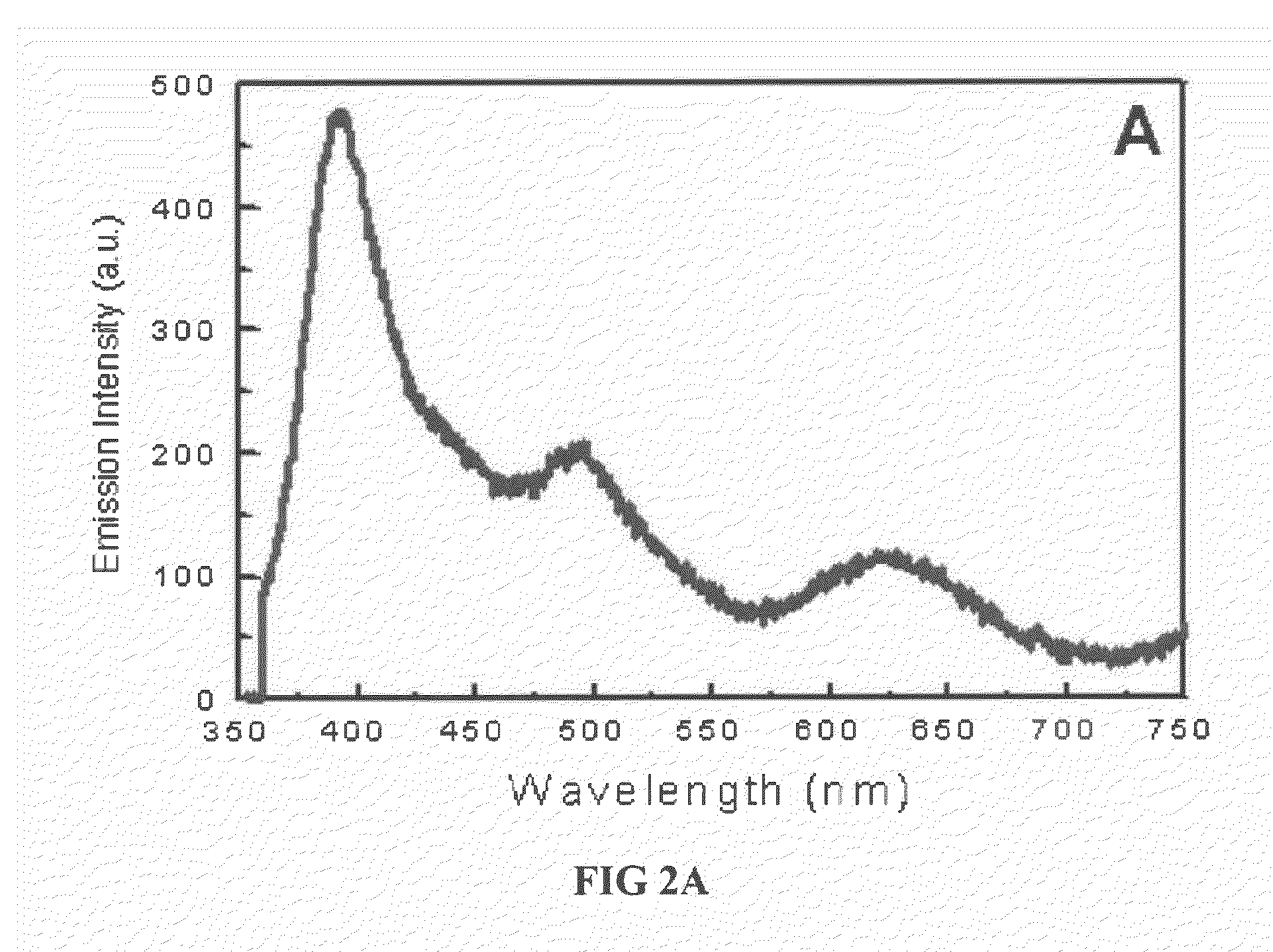Nanoparticle based photodynamic therapy and methods of making and using same
a photodynamic therapy and nanoparticle technology, applied in the field of nanoparticle based photodynamic therapy and methods of making and using same, can solve the problems of selective tumor destruction, cell death, cell loss of ability to reproduce, etc., and achieve the effect of facilitating energy transfer
- Summary
- Abstract
- Description
- Claims
- Application Information
AI Technical Summary
Benefits of technology
Problems solved by technology
Method used
Image
Examples
example 1
Studies for Cytotoxicity and Cancer Cell Killings
[0130]For CaF2:Eu2+, no dark toxicity was observed which is good for in vivo applications. However, CdTe nanoparticles did elicit concentration-dependent cytotoxicity. To reveal the origin of the toxicity, red nanoparticles were purified by precipitation and then dissolved back to aqueous solution. After purification, which putatively removed the free Cd2+ ions, the toxicity was greatly reduced. This indicates that the toxicity is probably due to free Cd2+ ions in the solution. Furthermore, purification and coating with silica (to prevent Cd2+ from leakage) may lead to non-toxic or less-toxic nanoparticles. ZnO nanoparticles have greater toxicity than bulk ZnO and were capable of killing liver tumor cells.
[0131]Male Sprague Dawley rats (100-120 g body weight) were given red CdTe nanoparticles (1 ml / kg) by intravenous administration via the tail vein. Control rats (n=3) received saline only (1 ml / kg). Locomotor activity was measured fo...
PUM
 Login to View More
Login to View More Abstract
Description
Claims
Application Information
 Login to View More
Login to View More - R&D
- Intellectual Property
- Life Sciences
- Materials
- Tech Scout
- Unparalleled Data Quality
- Higher Quality Content
- 60% Fewer Hallucinations
Browse by: Latest US Patents, China's latest patents, Technical Efficacy Thesaurus, Application Domain, Technology Topic, Popular Technical Reports.
© 2025 PatSnap. All rights reserved.Legal|Privacy policy|Modern Slavery Act Transparency Statement|Sitemap|About US| Contact US: help@patsnap.com



